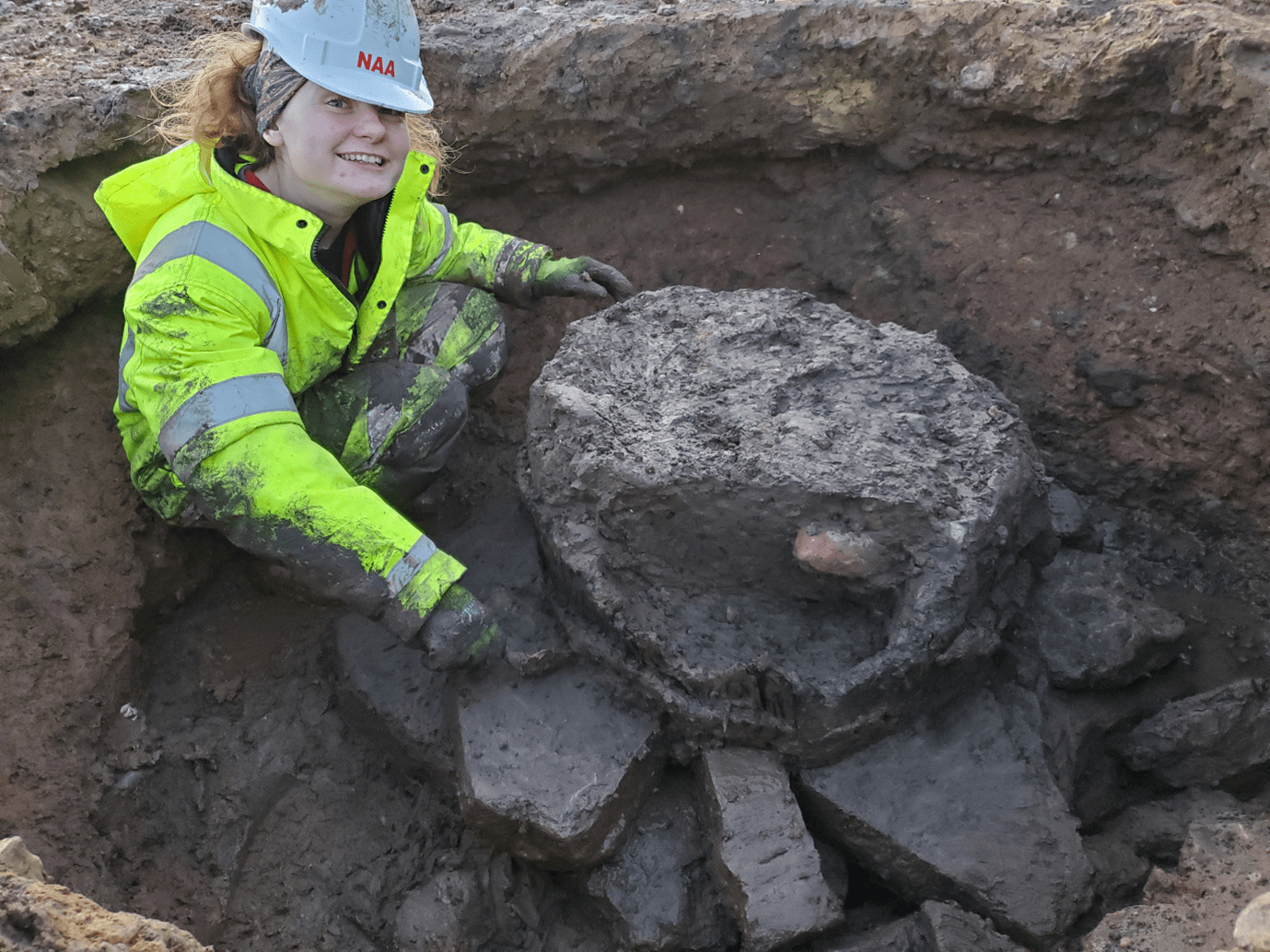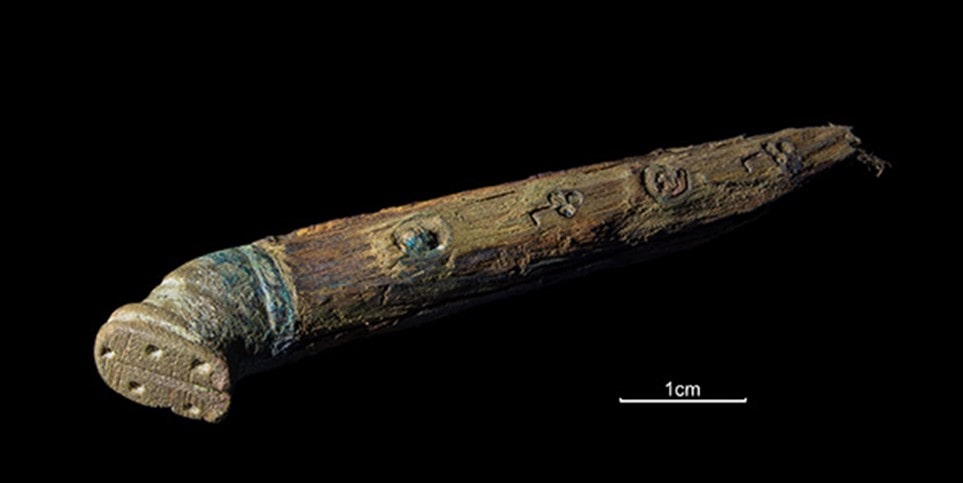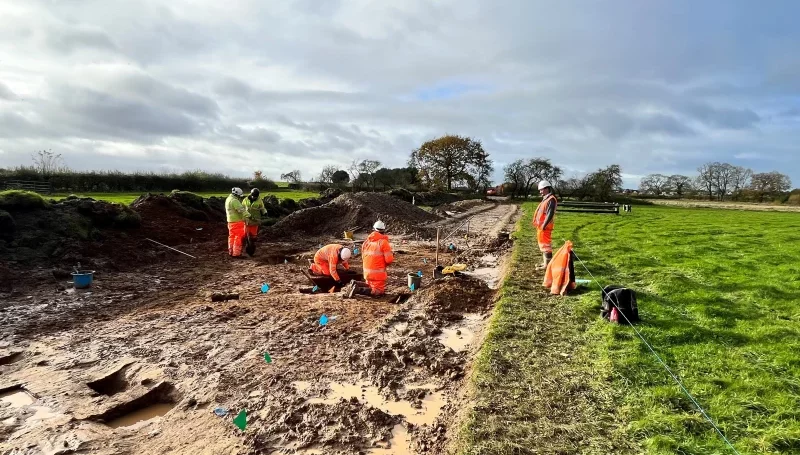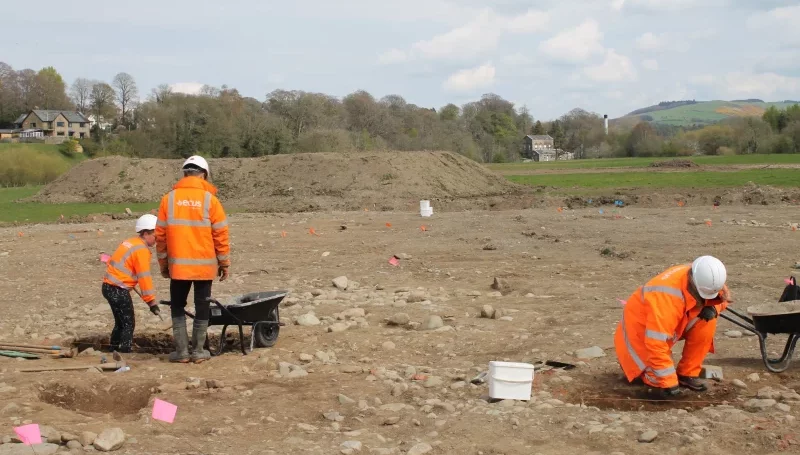Since the spring of 2021, a team of our archaeologists has been hard at work investigating and recording archaeological remains on behalf of Northumbria Healthcare on the site of the new hospital. The team have excavated an area covering over 7800m² situated on the outskirts of the medieval town of Berwick-upon-Tweed.
The key findings of the excavations include:
- A previously unknown part of the medieval defences comprising a large defensive wall and ditch, which may have formed a defensive annex to the medieval castle. The wall was three metres wide at its base, and together with a 12 metre wide ditch, would have formed a formidable defensive obstacle.
- A substantial trackway connecting the medieval Berwick to Edinburgh road to the castle, which cut across the northern edge of town. This trackway started life as an unsurfaced thoroughfare defined by ditches, before frequent use required it to be reinforced with an extensive stone surface.
- Five wells, which ranged in date from the medieval period through to the Victorian period, and revealed a wealth of information. As the wells fell out of use, they became filled with waste from the surrounding settlement, providing valuable archaeological evidence for the way people in the past lived their lives.

Material was also discovered that indicated the presence of a range of industries, including large-scale fish processing, grain malting for beer production, and animal horn processing. Horn was an important material in the medieval period, being a flexible, durable, and abundant material. The outer layer was stripped off leaving the core of the horn as waste. It is these waste horn cores that were recovered, with over 30 found in one pit.
Over 18,000 sherds of medieval pottery were recovered from the site, along with over 259kg of animal bone (including birds and fish). Well preserved organic remains were also discovered, including over 200 leather artefacts ranging from offcuts to complete shoes. Links to the continent were also discovered in the form of a Jetton, or accountancy token, minted in Tournai (now in Belgium) and a late 15th – 16th century decorated knife handle with a hoof-shaped endcap whose design was influenced by Flemish cutlers.

Our team will undertake a process of post-excavation analysis where all the information collected, including the site documentary records, finds information, and environmental information, will be pieced together. This will be used to tell the story of this part of Medieval Berwick-upon-Tweed, and its role within the wider settlement. This story will be presented in a publicly available report that will form part of the enduring legacy of the project. The recovered site archive and artefacts will be deposited with a local museum, allowing future generations to further study this fascinating site.




